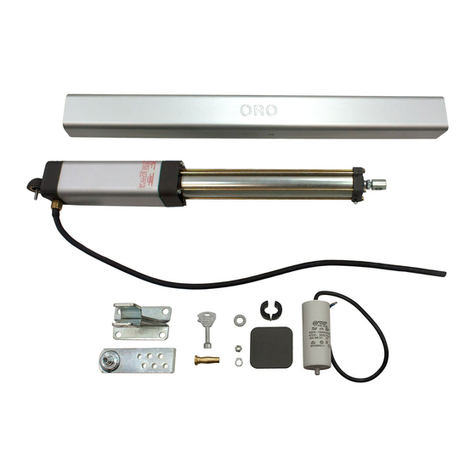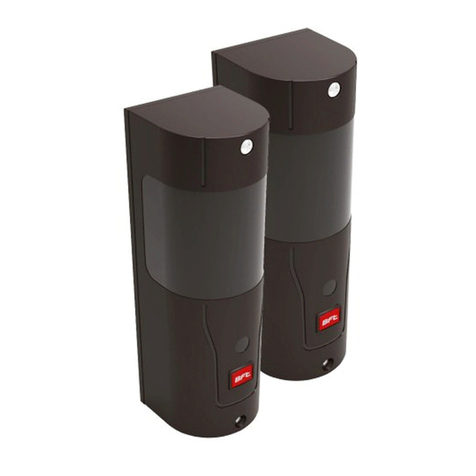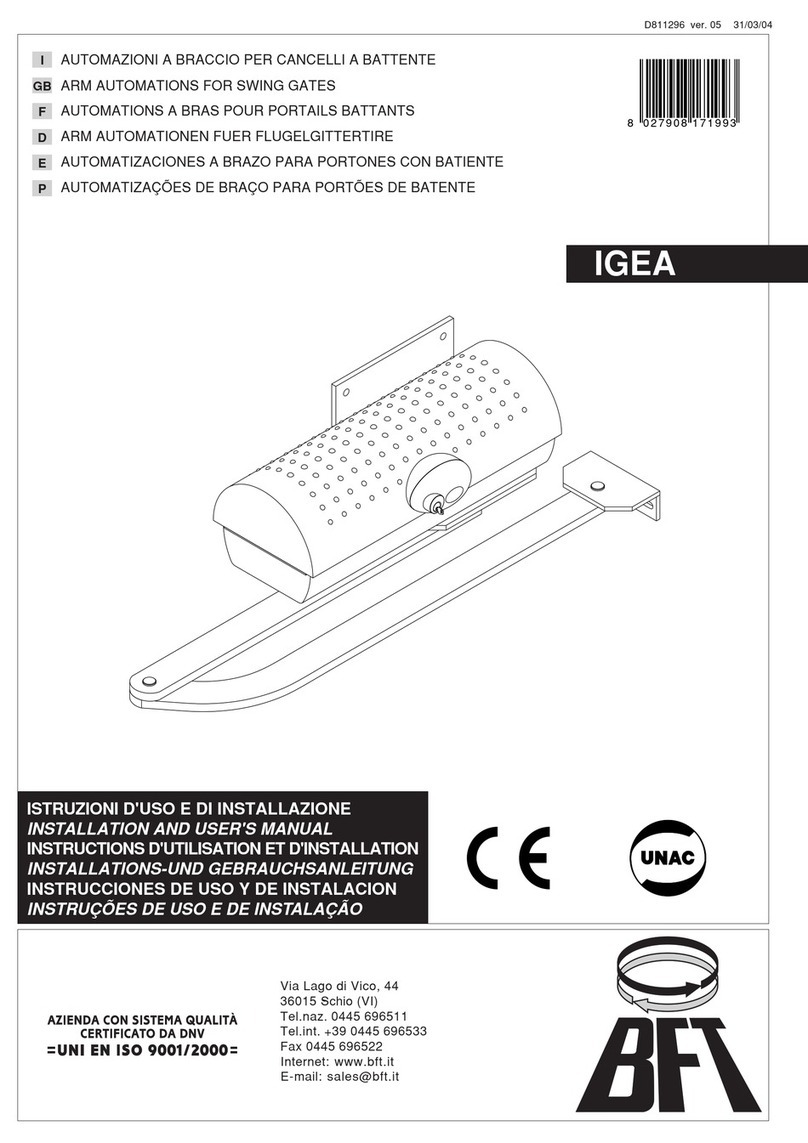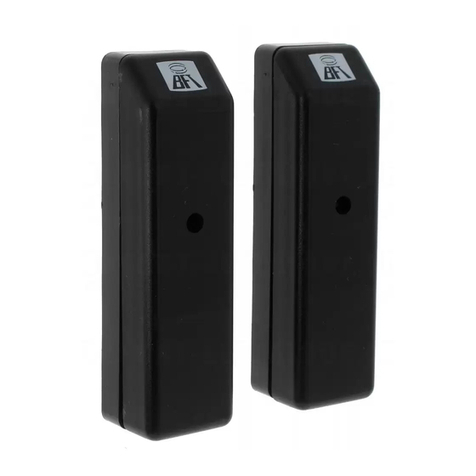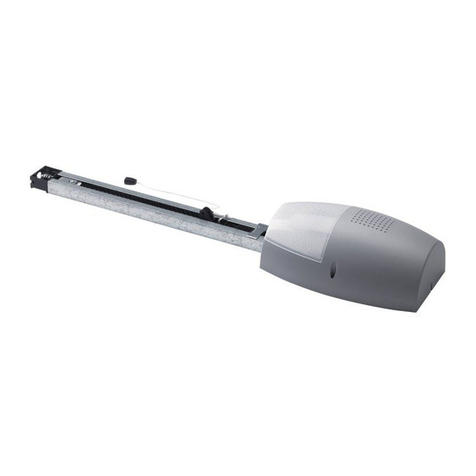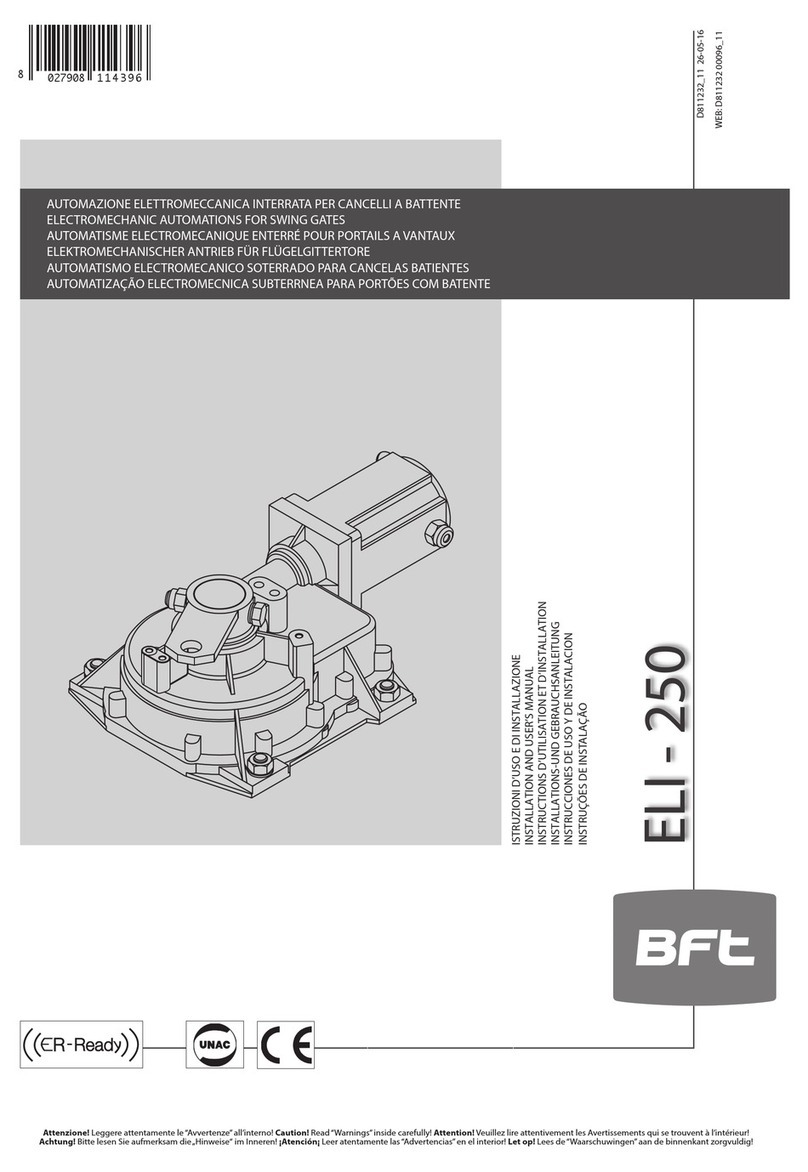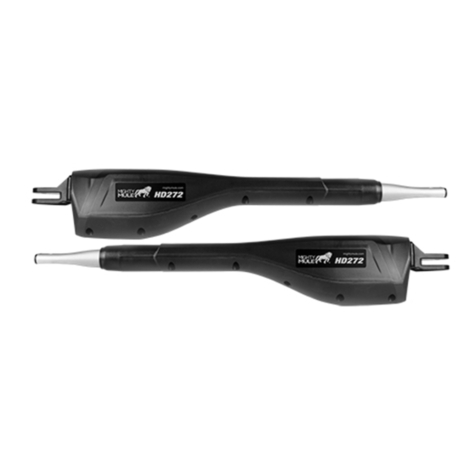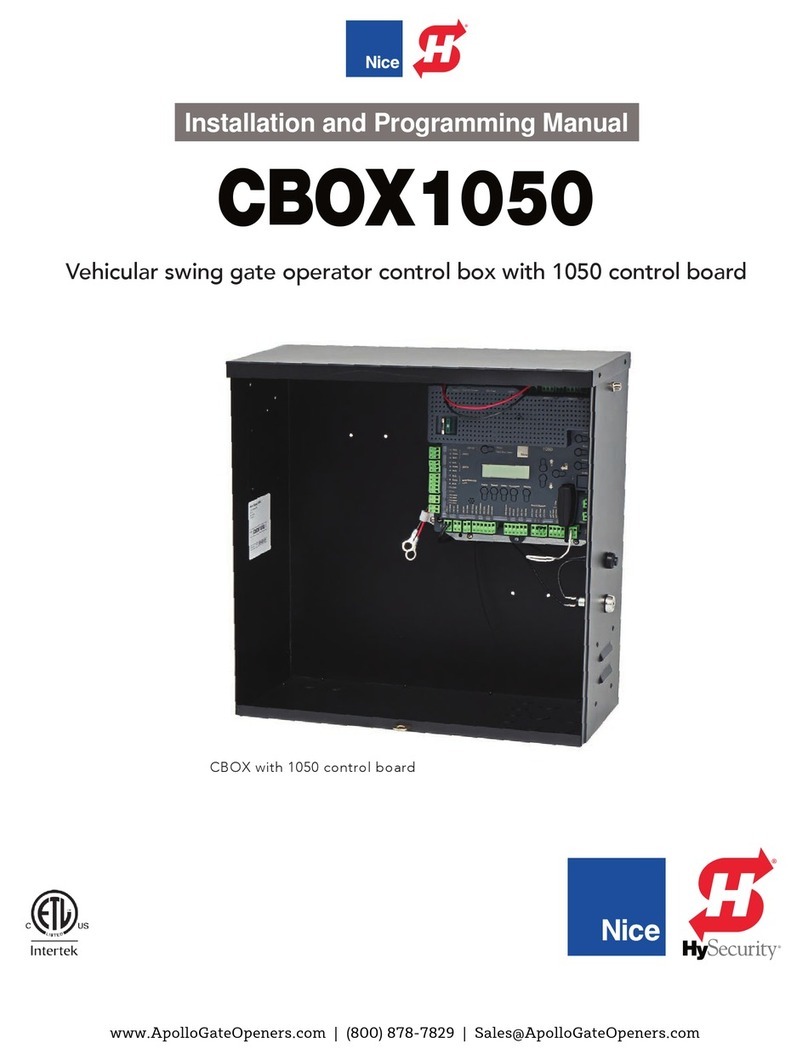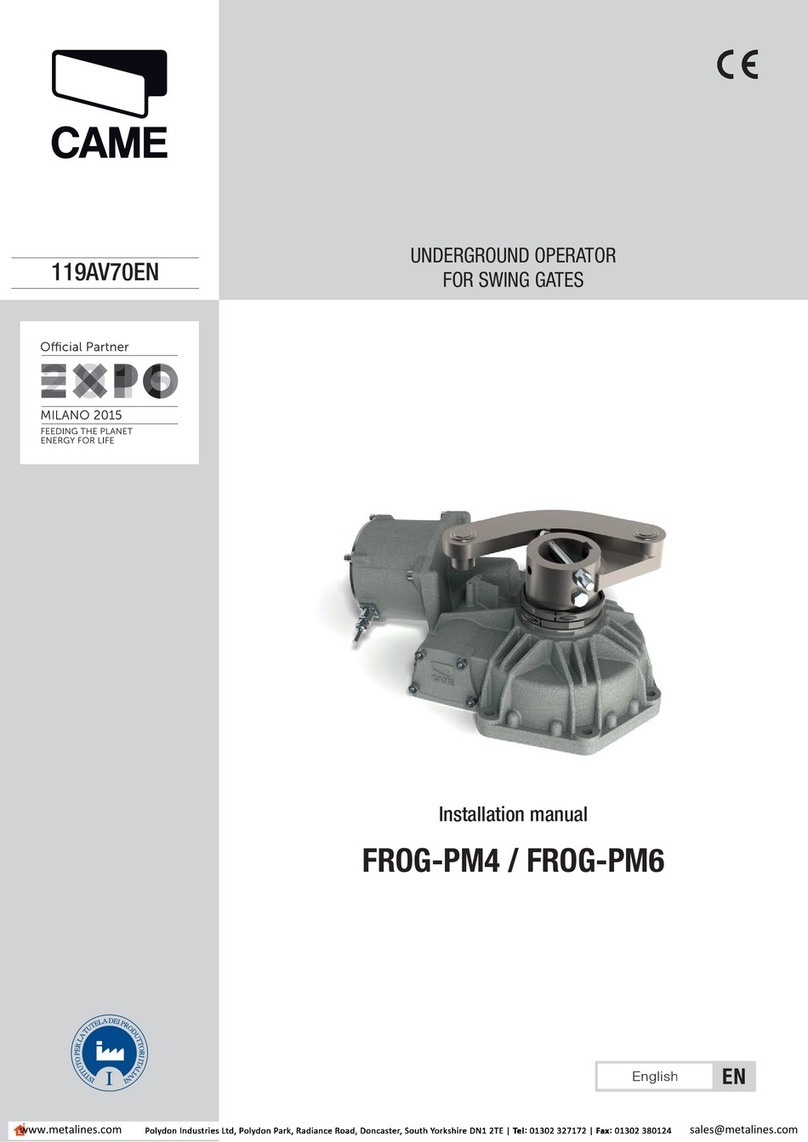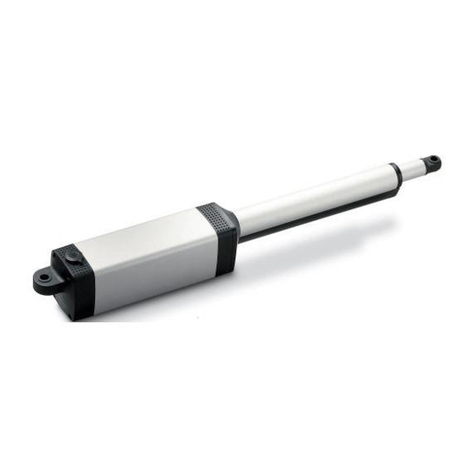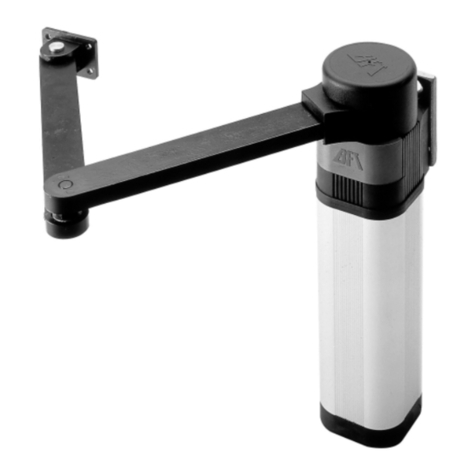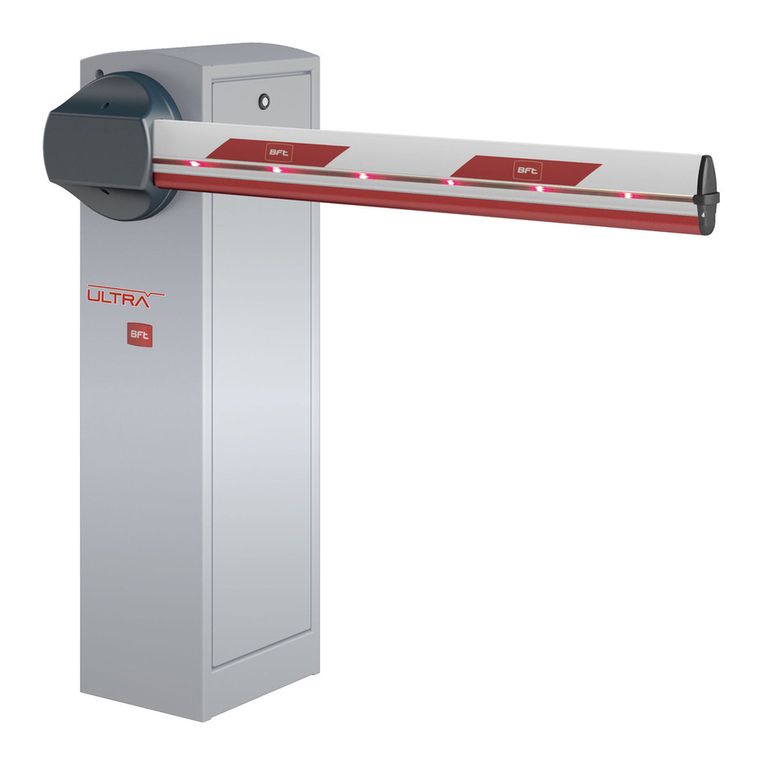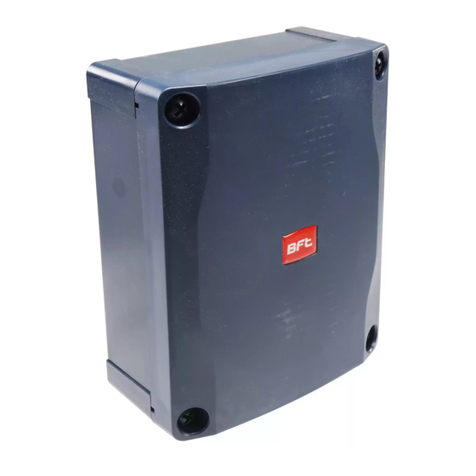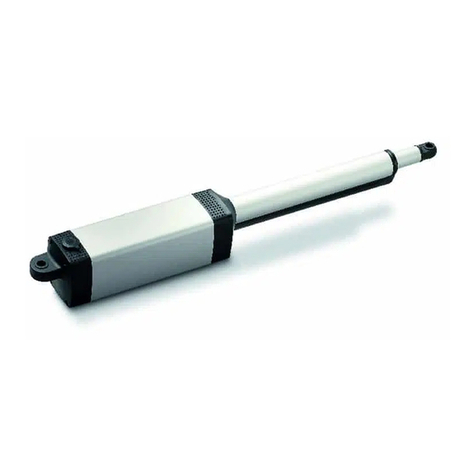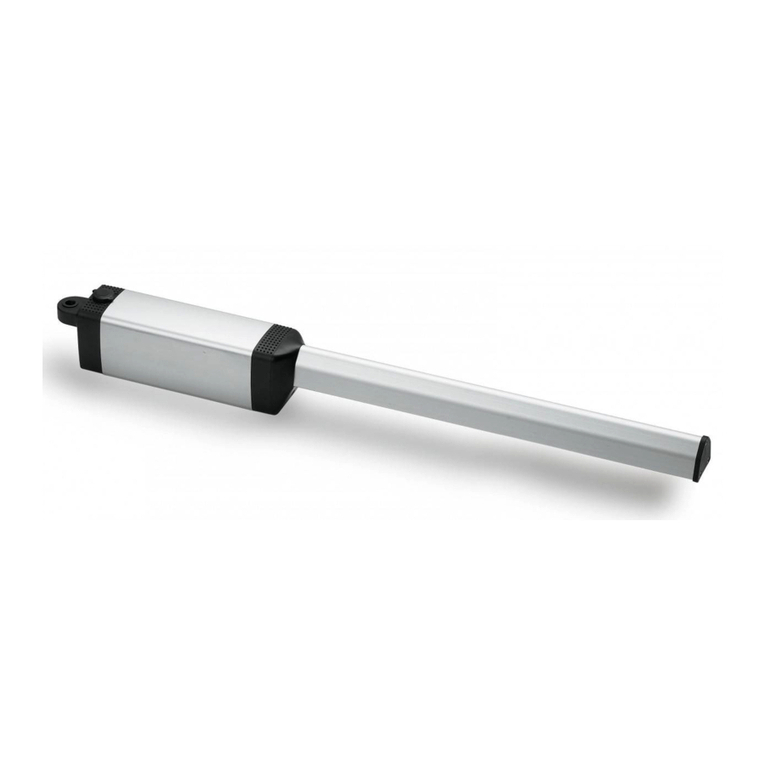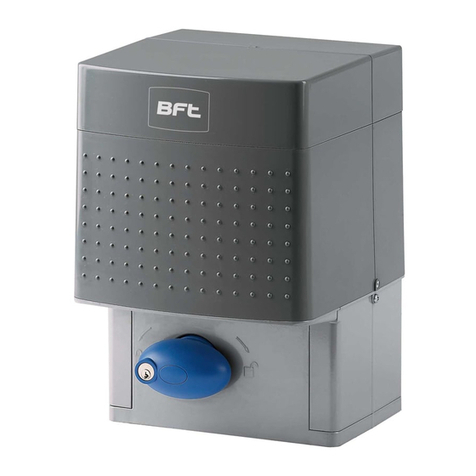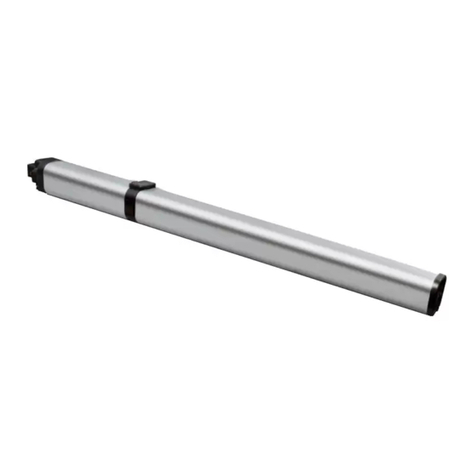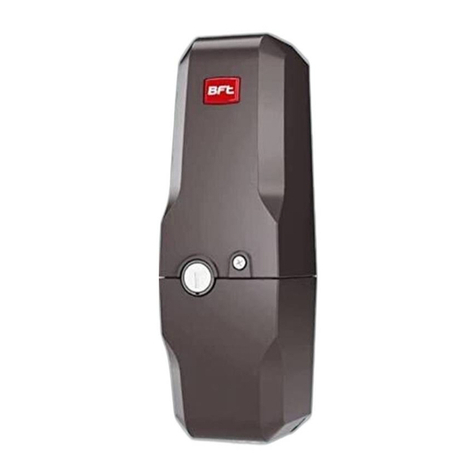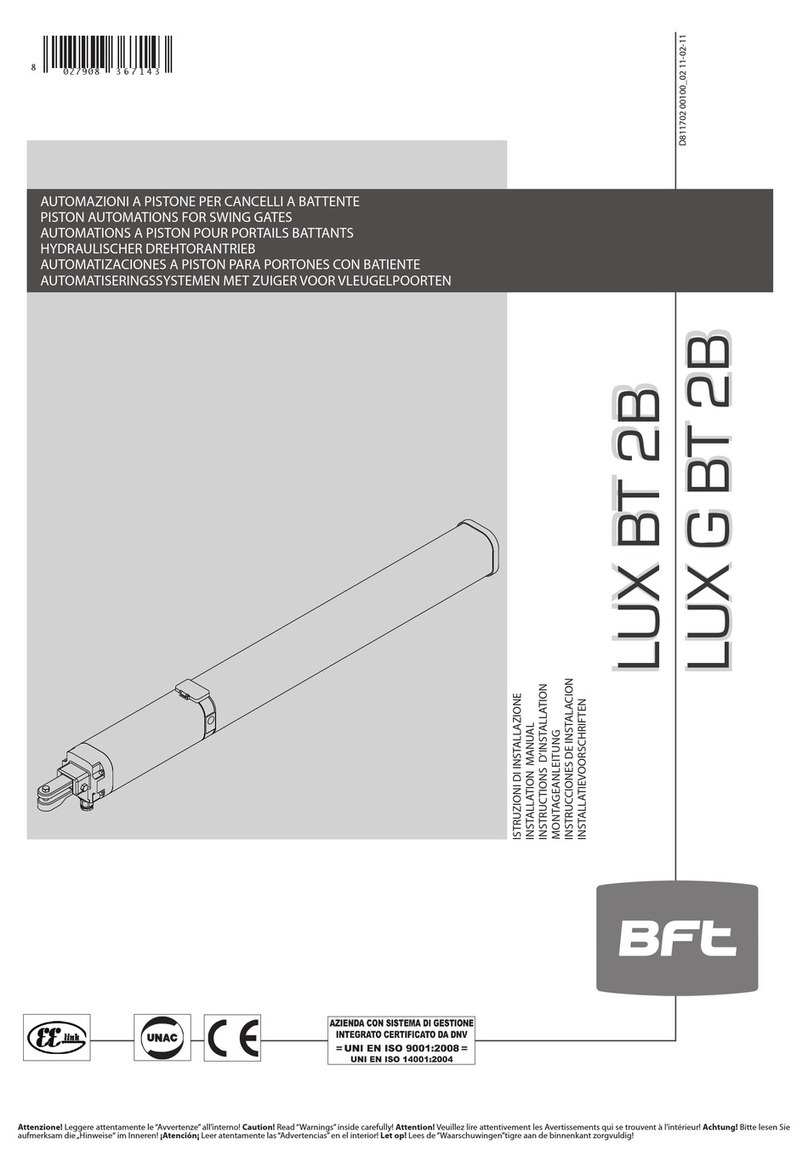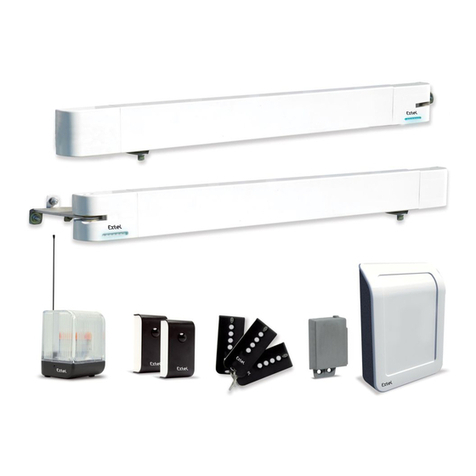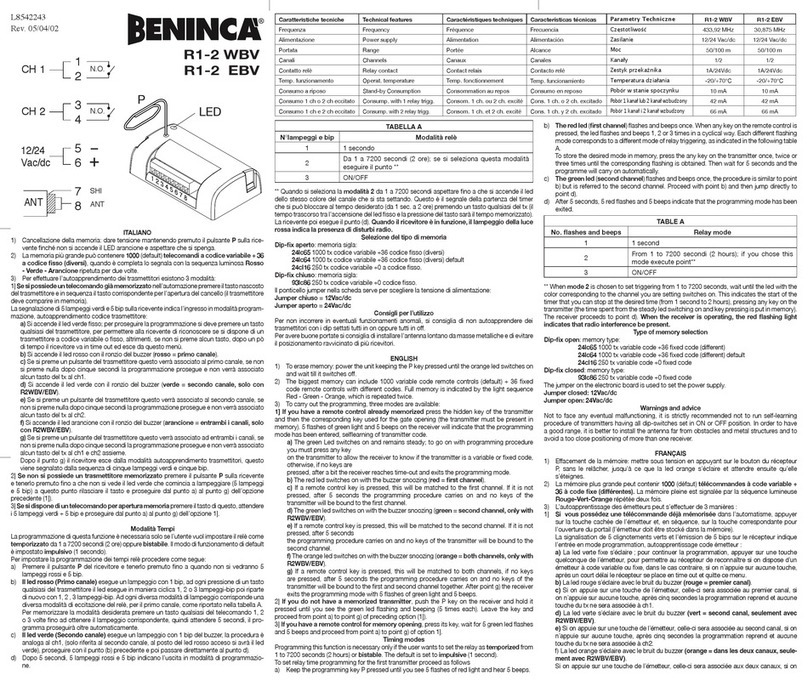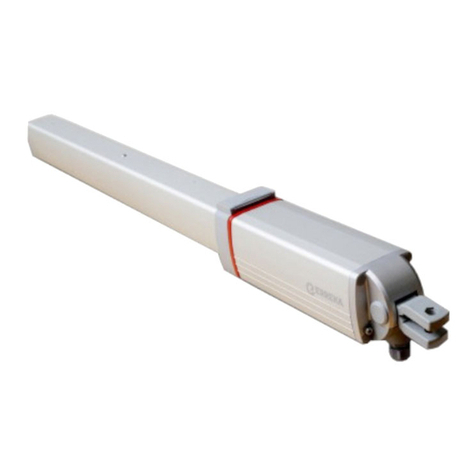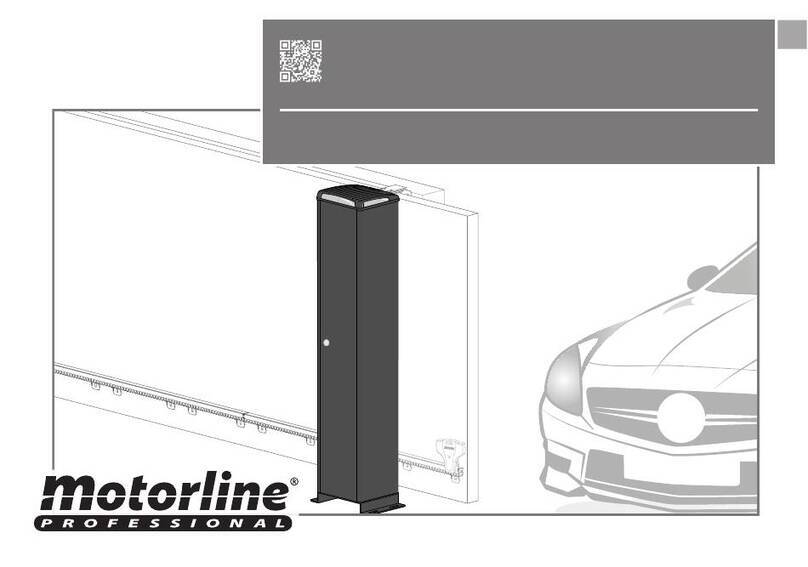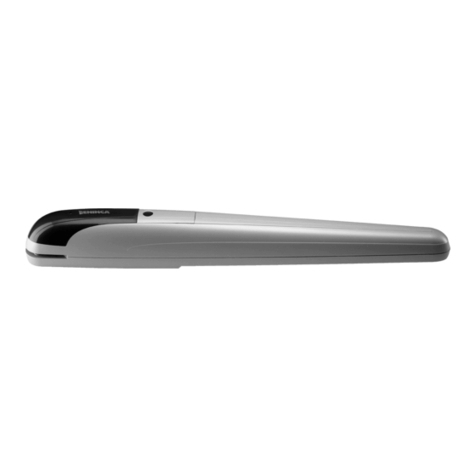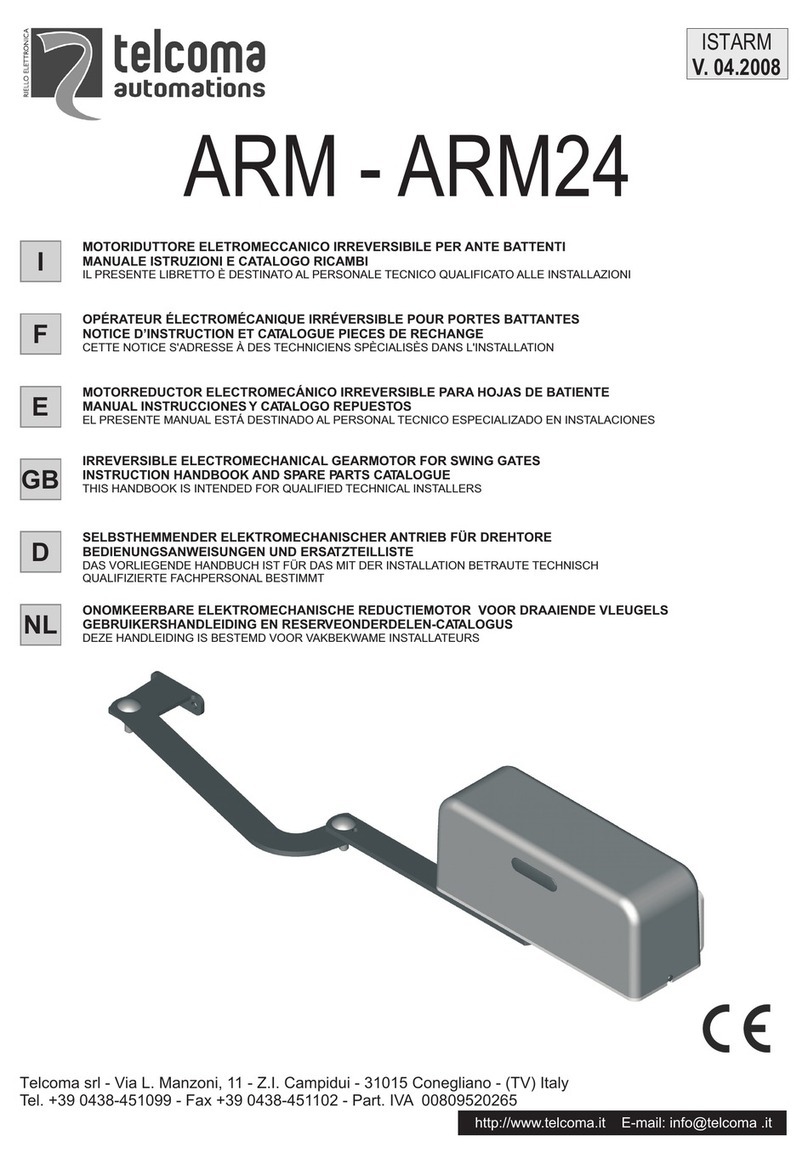DEIMOS Ver. 05 -
13
D811299_05
INSTALLATION MANUAL ENGLISH
Thank you for buying this product, our company is sure that you will be more
than satisfied with the product’s performance. The product is supplied with
a “Warnings” leaflet and an “Instruction booklet”. These should both be
readcarefully as they provideimportant information about safety, installation,
operation and maintenance. This product complies with the recognised
technical standards and safety regulations. We declare that this product is
in conformity with the following European Directives: 89/336/EEC and 73/
23/EEC (and subsequent amendments).
1) GENERAL OUTLINE
The DEIMOS actuator offers ample installation versatility, thanks to the
extremely low position of its pinion, its compact shape and the height and
depth adjustments available. The adjustable mechanical clutch ensures
antisquash safety and provides smooth progressive starting operations.
The emergency manual release manoeuvre can be carried out very easily
by means of a knob supplied with a standard key, or an optional personalised
key.Theend-of-strokestopiscontrolledby electromechanical microswitches
or, for very cold areas, by proximity sensors. The control unit can be either
incorporated or fitted to a separate panel.
The gearmotor (fig. 1) comprises :
“M” Motor
“R” Reduction gear with worm screw – worm wheel
“F” Mechanical clutch on motor shaft
“S” Electromechanical limiting unit or proximity sensor
“P” Pinion with release mechanism
“C” Control unit and capacitor
2) GENERAL SAFETY
WARNING! An incorrect installation or improper use of the product
can cause damage to persons, animals or things.
• The “Warnings” leaflet and “Instruction booklet” supplied with this
product should be read carefully as they provide important information
about safety, installation, use and maintenance.
• Scrap packing materials (plastic, cardboard, polystyrene etc) according
to the provisions set out by current standards. Keep nylon or polystyrene
bags out of children’s reach.
• Keep the instructions together with the technical brochure for future
reference.
• This product was exclusively designed and manufactured for the use
specified in the present documentation. Any other use not specified in
this documentation could damage the product and be dangerous.
• The Company declines all responsibility for any consequences resulting
from improper use of the product, or use which is different from that
expected and specified in the present documentation.
• Do not install the product in explosive atmosphere.
• The construction components of this product must comply with the
following European Directives: 89/336/CEE, 73/23/EEC, 98/37/EEC
and subsequent amendments. As for all non-EEC countries, the above-
mentioned standards as well as the current national standards should
be respected in order to achieve a good safety level.
• The Company declines all responsibility for any consequences resulting
from failure to observe Good Technical Practice when constructing
closing structures (door, gates etc.), as well as from any deformation
which might occur during use.
• The installation must comply with the provisions set out by the following
European Directives: 89/336/CEE, 73/23/EEC, 98/37/EEC and
subsequent amendments.
• Disconnect the electrical power supply before carrying out any work on
the installation.
• Fit an omnipolar or magnetothermal switch on the mains power supply,
having a contact opening distance equal to or greater than 3mm.
• Check that a differential switch with a 0.03A threshold is fitted just before
the power supply mains.
• Check that earthing is carried out correctly: connect all metal parts for
closure (doors, gates etc.) and all system components provided with an
earth terminal.
• Fit all the safety devices (photocells, electric edges etc.) which are
needed to protect the area from any danger caused by squashing,
conveying and shearing.
• Position at least one luminous signal indication device (blinker) where
it can be easily seen, and fix a Warning sign to the structure.
• The Company declines all responsibility with respect to the automation
safety and correct operation when other manufacturers’ components
are used.
• Only use original parts for any maintenance or repair operation.
• Do not modify the automation components, unless explicitly authorised
by the company.
• Instruct the product user about the control systems provided and the
manual opening operation in case of emergency.
• Do not allow persons or children to remain in the automation operation
area.
• Keep radio control or other control devices out of children’s reach, in
order to avoid unintentional automation activation.
• The user must avoid any attempt to carry out work or repair on the
automation system, and always request the assistance of qualified
personnel.
• Anything which is not expressly provided for in the present instructions,
is not allowed.
3) TECHNICAL DATA
Power supply: ................................. single-phase 230V ±10% 50Hz (*)
Motor revolutions: ...................................................................... 1400 min-1
Absorbed power: ............................................................................. 290W
Max absorbed power: ................................ 1,5A (230V ) - 3A (110V )
Capacitor: ........................................... 10 µF (230V ) :40 µF (110V )
Thermal protection: .......................................................................... 110°C
Insulation class: ........................................................................................ F
Max leaf weight: ................................................................ 5000N (≈500kg)
Reduction ratio: ................................................................................... 1/30
Output revolutions: ....................................................................... 48 min-1
Pinion pitch: ................................................................. 4mm (14/18 teeth)
Leaf speed: .......................... :8,5 m/min (14 teeth) :11m/min (18 teeth)
Impact reaction ............................................................ : mechanical clutch
Lubrication: .................................................................. Permanent grease
Manual manoeuvre: .......................................... Mechanical knob release
No. manoeuvres in 24 hours: .............................................................. 100
Control unit: ........................................................................... MIZAR-ELIX
Environmental conditions: ........................................ from -15°C to +60°C
Degree of protection: ......................................................................... IP24
Noise: ........................................................................................... < 70dBA
Dimensions: ................................................................................ See fig.2
Controller weight: .............................................................................. 15kg
(*) Special supply voltages on request.
4) PRELIMINARY CHECKS
Before proceeding to any installation work, check that the gate structure
conforms to whatever is prescribed by the current standards, and in
particular that:
• The gate sliding track is linear and horizontal, and the wheels are
suitable for supporting the gate weight.
• The gate manual operation can be carried out smoothly along its entire
run, and there is no excessive side slipping.
• A correct play is provided between the upper guide and the gate to
ensure regular noiseless movement.
• The opening and closing gate stops are positioned.
• The established position for gearmotor fixing allows the emergency
manoeuvre to be carried out smoothly and safely. In the case where the
elements checked do not meet the above requirements, proceed to
carrying out the necessary corrective actions or replacements.
WARNING: Remember that control devices are intended to facilitate
gate operation, but can not solve problems due to any defects or
deficiency resulting from failure to carry out correct installation or
maintenance.
Take the product out of its packing and inspect it for damage. Should it be
damaged, contact your dealer. Remember to dispose of its components
(cardboard, polystyrene, nylon, etc.) according to the current prescriptions.
5) BASE PLATE ANCHORING
5.1) Standard position
• Dig a hole where the cement pad with the buried base plate log bolts is
to be placed in order to fix the reduction gear unit (fig.3). If the sliding
track is already there, digging must be partly carried out in the track
foundation casting. This way, should the track foundation casting sag,
the gearmotor base would also lower, thus maintaining the play between
pinion and rack (approximately 1-2 mm).
• Position the base plate according to the dimensions specified in fig.4.
• The pinion symbol printed on the base plate must be visible and directed
towards the gate. This also ensures the correct positioning of the
raceways for electrical connections.
• Let the flexible pipes containing electrical cables protrude from the
base plate.
• In order to keep the base plate in its correct position during installation,
it may be useful to weld two iron flat bars under the track, and then weld
